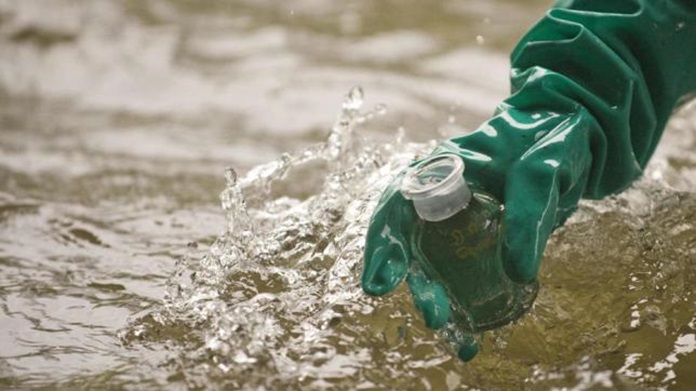
The UB-FBG takes parts in the licencing of a technology that speeds up the detection of bacteria in drinking water
Despite the microbiological screening of water intended for human consumption, neither the water in water supply systems nor bottled water are sterile, as they contain environmental micro-organisms. Determining the microbiological composition of this microbiota is essential in order to improve treatment systems. The consortium that includes the Bosch i Gimpera Foundation (FBG), the UB’s knowledge transfer office, has licenced a technology that makes it possible to speed up the detection of these microorganisms in water, thereby improving the safety and healthiness of the water supplied to the population. This technology is the Drinking Water Library (DWL), a database of MALDI-TOF profiles, a method for identifying microorganisms based on proteomics.
This technology is the result of a Retos Colaboración project that involves the UB-FBG —through the University of Barcelona’s MARS research group (Health-Related Water Microbiology)—, the University of Valencia —through the Spanish Type Culture Collection (CECT)— and Aigües de Barcelona, which has acquired the exclusive licence to exploit the Drinking Water Library.
“This database is a very useful tool for water laboratories, water supply companies, universities, research centres and users of MALDI-TOF MS, as it allows rapid bacterial detection, therefore facilitating prompt action in the event of any bacterial presence that could pose a risk to public health,” says Anicet Blanch, principal investigator of MARS and Full Professor at the Department of Genetics, Microbiology and Statistics of the University of Barcelona (UB).
Profiles of 320 bacterial strains
Currently, both clinical and environmental microbiology laboratories mainly use three methods for bacterial identification: phenotypic techniques, molecular methods, and methods based on proteomics. The disadvantages of the first two include high costs, long response times and the requirement of specialised personnel to carry out the identification. Among proteomics-based methods, which identify microorganisms based on the characterisation of their proteins, MALDI-TOF (matrix-assisted laser desorption / Ionization-time-of-flight mass spectrometry) is the most promising technique in terms of speed for microbial identification. Moreover, the unit price per sample is very low, and the amortisation of the equipment is affordable if the number of processed samples is large.
“Despite being incredibly fast, very user-friendly and highly reliable in terms of results, this technique has so far been limited to clinical settings, where it is commonly used, because there was no sufficiently large database of environmental microorganisms for its application,” explains Anicet Blanch.
Faced with this challenge, the researchers’ aim was to obtain the MALDI-TOF molecular fingerprint of as many microorganisms as possible. The project started out with a large number of strains isolated during the sampling campaigns carried out by the UB-FBG team and Aigües de Barcelona, which were complemented with other strains available in the Spanish Type Culture Collection (CECT).
The result is a database that includes the profiles of 320 strains, many of which correspond to new bacterial species, thus increasing the potential for identification of aquatic bacteria. The CECT provided 199 strains, most of them from drinking water, and 121 other strains came from process waters, distribution networks, bottled waters and springs, amounting to the 3,809 isolates analysed during the research period. However, all strains are now accessible to the CECT.
According to researchers, this database makes the process of identifying bacteria in drinking water samples significantly faster and cheaper compared to classical automated biochemistry tests, as it can identify a microorganism in less than five minutes of analytical time, and the cost of the necessary reagents and consumables is very low. In addition, it is easy to use and allows the analysis of species that are difficult to identify using classical microbiology techniques.
“This collection is an asset for the routine microbiological screening carried out by water treatment and distribution operators of drinking and bottled water, as it helps to microbiologically characterise the water supply,” concludes Blanch.

